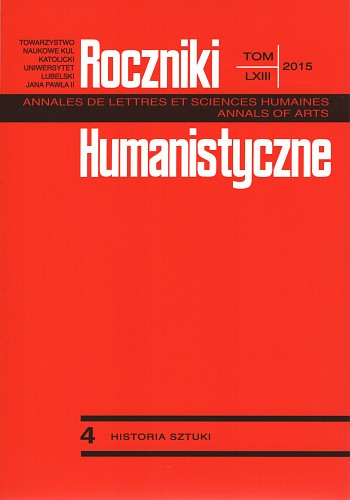Fantazmat czy doświadczenie rzeczywistości pozahistorycznej? Studium obrazu Wniebowzięcie zbawionych Jheronimusa Boscha z Palazzo Ducale w Wenecji
Fantasy or a transcendent experience? Study of the painting Ascent into Heaven by Jheronimus Bosch from the Palazzo Ducale in Venice
Author(s): Grzegorz KubiesSubject(s): Cultural history, Visual Arts
Published by: Towarzystwo Naukowe KUL & Katolicki Uniwersytet Lubelski Jana Pawła II
Keywords: Jheronimus Bosch;Early painting;medieval eschatology;angels;tunnel;light
Summary/Abstract: The painting Ascent into Heaven (88.8 x 39.9 cm; dendrological dating: 1482-1490) kept in the Palazzo Ducale in Venice is one of the four eschatological panels (remaining three: Earthly Paradise, Fall of the Damned, Hell) which probably were in the collection of the Venetian Cardinal Domenico Grimani in the 1520s. The panels’ original arrangement and function are unknown. The paintings are not signed and their attribution to Jheronimus Bosch (c. 1450-1516 ) is based largely on the grounds of stylistic criteria. In the study I put Ascent into Heaven into two fundamental contexts for the iconographic analysis of this work: eschatological literature and Netherlandish/ Flemish painting and in the context of near-death experiences (NDE) as well. The answer to the question posed in the title of the study must remain twofold. On the basis of the data gathered in the study the content of the painting can be comprehended by reference to the most frequently quoted sources of inspiration for Bosch: one painting by Dieric Bouts (left wing of the Last Judgement Altarpiece; Lille, Palais des Beaux Arts), two illuminations by Simon Marmion (Le livre des sept Ages du monde; Brussels, Bibliothèque royale de Belgique, Ms. 9047, fols. IV & 12r) and a literary work Dat rike der ghelieven by Jan van Ruusbroec. Its content can be equally understood by reference to the role of the painter’s imagination (categories of inventio and fantasia), using his theological and astronomical knowledge. The above line of interpretation that emphasizes the influence of biblical logosphere, takes into account undeniable religious experience of the painter from ‘s-Hertogenbosch resulting from being a member of the Church. The factor of an epistemological importance which influences the form of the answer to the title question is hypothetical non-verifiable Bosch’s personal transcendental experience, thus it becomes impossible to evaluate the translation of what is spiritual (experience) into visual (image). Due to the elusive, not fully scientific nature of NDE this fenomenon should be excluded from the final conclusion.
Journal: Roczniki Humanistyczne
- Issue Year: 63/2015
- Issue No: 04
- Page Range: 5-37
- Page Count: 33
- Language: Polish

